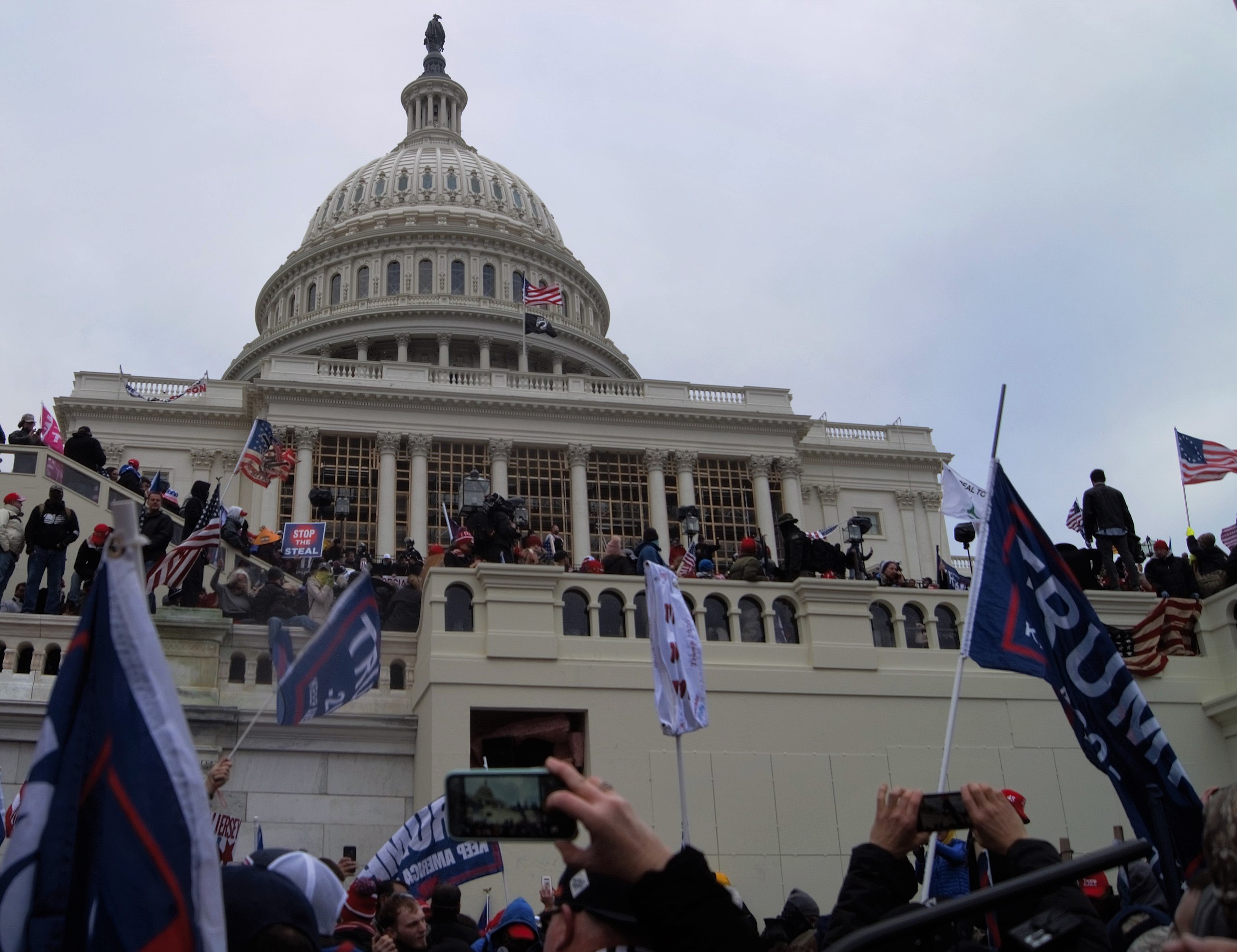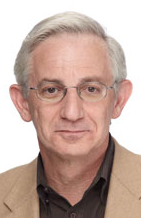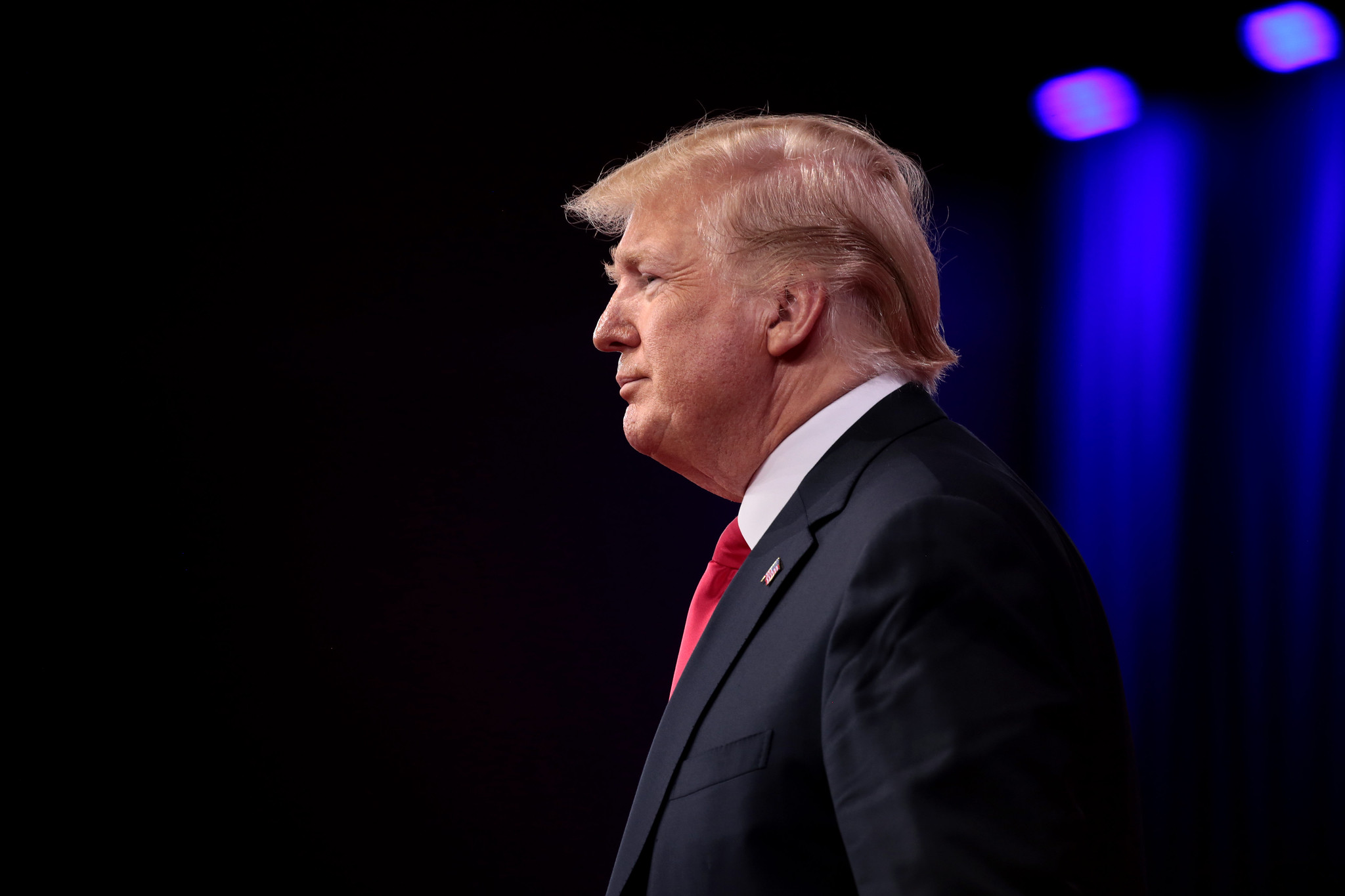Five Stray Thoughts on the Oath Keepers Verdict
A listicle of in-the-weeds takeaways from Lawfare’s Oath Keepers trial correspondent.

Published by The Lawfare Institute
in Cooperation With

I already offered my account of the strengths and weaknesses of the evidence in the Oath Keepers seditious conspiracy prosecution on Monday morning. For their part, the daily media have by now aptly explored the key takeaways from the jury’s Tuesday evening verdicts in that case.
For readers’ assistance, here is a useful chart of the jury’s verdicts on each of the 10 counts as they relate to each of the five defendants. In addition to the guilty/not guilty binary, I have a few stray, in-the-weeds thoughts on the verdicts that I’d like to share after live-tweeting all but about two hours of the 29-day trial from the courthouse media room. I’ll do so here in listicle form—a format woefully underutilized by Lawfare:
1. While the U.S. Department of Justice and many observers are understandably celebrating the department’s smashing victory, there is also a footnote worth mentioning here. It doesn’t undercut the government’s win, which is real and plain: The jury convicted the two top defendants, Elmer Stewart Rhodes III and Kelly Meggs, of the rare and grave seditious conspiracy charge, while also convicting every defendant of at least two felonies carrying maximum 20-year sentences.
But here’s the asterisk. Remarkably, yesterday’s verdicts also represented the first time to date that a jury has acquitted any Jan. 6 defendant on any count—and the jury did so Tuesday evening 11 times out of 28 total opportunities.
By my tally—and I welcome crowd-sourced fact-checkers to correct me—prior to yesterday, jurors had convicted Jan. 6 defendants on 65 of the 67 total counts presented to them. They were hung on the other two counts—both in the recent trial of Riley June Williams, an acolyte of now-famed white supremacist and Mar-a-Lago patron Nick Fuentes. (In bench trials, prosecutors have won convictions on 60 of 70 counts in Jan. 6 cases, with all 10 acquittals coming in cases tried before U.S. District Judge Trevor N. McFadden.)
2. So, does Listicle Point #1 mean that Tuesday’s verdicts were an under-sung setback for the Justice Department—or even a rebuke? No. Historically, prosecutors have struggled to win seditious conspiracy convictions. Their last attempt, involving the weird “Hutaree” group of rural Michigan in 2012, led to catastrophic directed verdicts of acquittal for all defendants, while a 2009 prosecution—in the case of would-be bombers of, inter alia, the Sears Tower in Chicago—led to conviction of only one of six defendants on the seditious conspiracy count.
In fact, the jury’s split verdict Tuesday may be a blessing in disguise for prosecutors. It may help redeem District of Columbia juries from charges of bias leveled against them by defense lawyers attempting to move their clients’ trials to other venues. (See Escape from D.C.) Similarly, it may help the convictions obtained yesterday withstand appeal, by suggesting that the jury parsed the case carefully and was not caught up in emotion or political partiality.
3. By and large, the Oath Keepers jury’s choices seem to make sense. It acquitted on the three weakest charges—I explain why they were weakest in my earlier post—those accusing Meggs, Kenneth Harrelson, and Jessica Watkins of destruction of federal property. My earlier piece also highlighted serious challenges to proving the conspiracy counts, and, sure enough, the jury had trouble with those. It convicted on only seven of the 15 conspiracy counts before them.
4. How did the jury make distinctions between all those conspiracy counts? Sensibly, I think. This is speculative, of course, but here’s what it looks like they did. First, remember that the seditious conspiracy charge was broader than the others, and prosecutors alleged that it began earlier, in November—before anyone even began focusing on Jan. 6 as an important date. In contrast, the other two conspiracies were alleged to have begun in mid-December and to have focused more narrowly on obstructing or disrupting the Jan. 6 certification.
So it appears that the jury found Rhodes and Meggs—and only them—guilty of this charge because of their discussions with other Oath Keepers about actual civil war and revolution. In fact, according to the special interrogatories on the jury verdict form, the jury convicted both Rhodes and Meggs on the broader clause of the statute charged—conspiracy to oppose by force the authority of the United States—not its narrower prong of conspiring to use force to “prevent, hinder, or delay the execution” of any U.S. law. So the jury may have been focused on Rhodes’s frequent calls to wage “civil war” or “bloody revolution”—blunter tactics than merely “delaying” by force, say, the Jan. 6 joint session. The jury may have also been impressed with evidence suggesting that Rhodes and Meggs continued to resist the transfer of presidential power even after Jan. 6. Such proof included Rhodes’s post-insurrection purchases of firearms-related equipment, his continuing seditious diatribes to his troops (including this one on Jan. 14, 2021, for instance), and Meggs’s own belligerent post-insurrection Signal chat messages.
What about the two other conspiracy charges? The jury appears to have decided that anyone who actually ascended the East Capitol steps in “stack formation” (each with his or her right hand on the right shoulder of the cadre in front of him or her) and entered the Capitol—defendants Meggs and Watkins—were guilty of the two other conspiracies: conspiracy to obstruct an official proceeding and conspiracy to prevent members of Congress from discharging their duties. That makes sense, too. Surely by the time they joined the stack and started marching up those stairs, they had reached a “meeting of the minds” with the approximately 10 other Oath Keepers in that stack about obstructing the certification. Defendants Rhodes and Thomas Caldwell weren’t in the stack, however, so they were acquitted of these conspiracies.
That leaves defendant Harrelson. He was not in the stack climbing the steps, but he did enter the Capitol. He and Oath Keeper Jason Dolan had been on a personal security detail nearby, remember, and had actually scaled the steps before any other Oath Keepers did. Harrelson only joined the rest of the stack at the very last minute, in front of the East Rotunda doors, and then entered with them. So it looks like the jurors reached a compromise verdict as to Harrelson. They acquitted him of conspiring to obstruct an official proceeding, but convicted him of conspiring to prevent Congress members from discharging their duties.
5. Still, I was surprised by some aspects of Tuesday’s verdicts. For one thing, the jury convicted all five defendants of the substantive count of corrupt obstruction of an official proceeding, including the two Oath Keepers who never entered the building—Rhodes and Thomas Caldwell. In Rhodes’s case, such a verdict is easily defensible. Rhodes could have been guilty of that charge by aiding and abetting its commission, because there was evidence that he may have given orders, directly or indirectly, for Meggs, Harrelson, Watkins, and, indeed, about 17 other Oath Keepers to storm the Capitol.
With Caldwell, though, the situation is different. Caldwell was on the inaugural scaffolding on the Capitol’s west front at the time the other Oath Keepers were storming the building’s east front, and there was no evidence that Caldwell had communicated with any Oath Keeper that day since the morning. More important, the jury acquitted Caldwell of all conspiracy charges, including conspiring to obstruct an official proceeding. His involvement in that last conspiracy had been, I believe, the government’s primary theory for holding him liable for the substantive count. Apart from the conspiracy evidence, Caldwell’s actual behavior on the inaugural scaffolding on Jan. 6—nonviolent egging on of other rioters without either assaulting or impeding officers or entering the building—was very tepid compared to other Jan. 6 criminal defendants. To my knowledge, conduct like Caldwell’s—once the conspiracy-related accusations are subtracted from the picture—has resulted in even misdemeanor charges only a handful of times. Of the more than 290 defendants charged with corrupt obstruction of an official proceeding to date, I know of no one accused of that offense based on transgressive conduct as marginal as Caldwell’s—again, once the conspiracy allegations are factored out. So I’ll be interested to see how Judge Amit Mehta responds to Caldwell’s nearly inevitable motion for a directed verdict of acquittal on that count. And you can be sure I’ll share my thoughts here on Lawfare.





